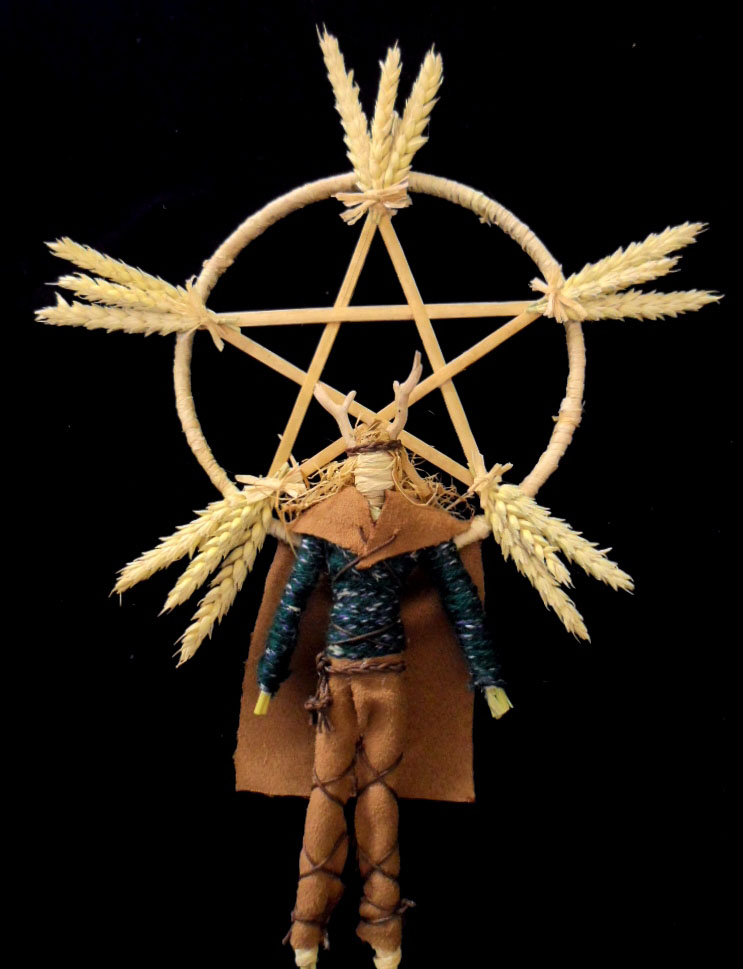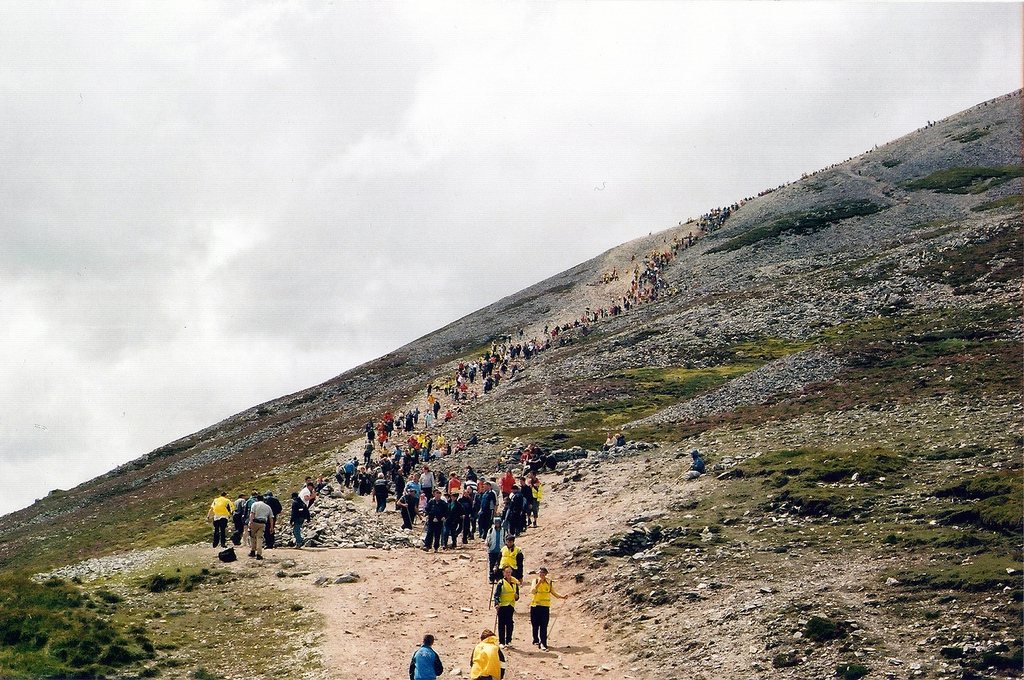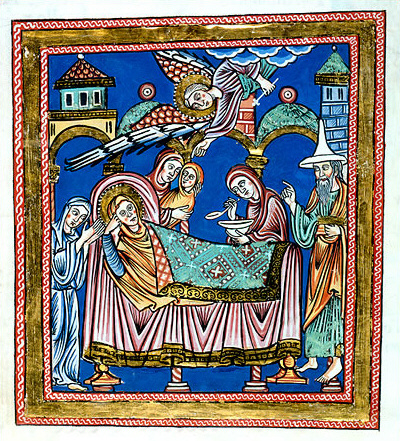|
Pattern (devotional)
A pattern () in Irish Roman Catholicism refers to the devotions that take place within a parish on the feast day of the patron saint of the parish, on that date, called a Pattern day, or the nearest Sunday, called Pattern Sunday. In the case of a local folk saint from Celtic Christianity, there may be archaeological remains traditionally associated with the saint, such as holy wells reputed to have healing powers. Often the parish priest will say Mass or lead prayers at such a site, sometimes processing between several locations. In some parishes, Pattern Sunday coincides with Cemetery Sunday, an annual ancestor veneration observance held in cemeteries which typically includes the cleaning and decoration of family graves as well as religious rituals. Tradition The name ''pattern'' is a corruption of ''patron'', as in "patron saint". In the earlier days of the Church, festivities began with religious devotions at the church, but this came to an end with the confiscation and/or ... [...More Info...] [...Related Items...] OR: [Wikipedia] [Google] [Baidu] |
Roman Catholicism In Ireland
, native_name_lang = ga , image = Armagh, St Patricks RC cathedral.jpg , imagewidth = 200px , alt = , caption = St Patrick's Cathedral, Armagh. , abbreviation = , type = National polity , main_classification = Catholic , orientation = Celtic Christianity , scripture = Bible , theology = Catholic theology , polity = , governance = Episcopal , structure = , leader_title = Pope , leader_name = Francis , leader_title1 = Primate of All Ireland , leader_name1 = Eamon Martin , leader_title2 = Apostolic Nuncio , leader_name2 = Jude Thaddeus Okolo , leader_title3 = , leader_name3 = , fellowships_type = , fellowships = , fellowships_type1 = , fellowships1 = , division_type = , division = , division_type1 = , division1 = , division_type2 = , ... [...More Info...] [...Related Items...] OR: [Wikipedia] [Google] [Baidu] |
Paul Cullen (bishop)
Paul Cardinal Cullen (29 April 1803 – 24 October 1878) was Roman Catholic Archbishop of Dublin and previously of Armagh, and the first Irish cardinal. His Ultramontanism spearheaded the Romanisation of the Catholic Church in Ireland and ushered in the devotional revolution experienced in Ireland through the second half of the 19th century and much of the 20th century. A trained biblical theologian and scholar of ancient languages, Cullen crafted the formula for papal infallibility at the First Vatican Council. Early life Cullen was born at Prospect, Narraghmore, Athy, County Kildare, one of 16 children of Hugh and Judith (Maher) Cullen, six of whom were from Hugh's first marriage. His first school was the Quaker Shackleton School in nearby Ballitore. Following the relaxation of some of the Penal Laws, his father purchased some , giving him the status of a Catholic "strong farmer", a class that greatly influenced 19th-century Irish society. They were fervent in their Cat ... [...More Info...] [...Related Items...] OR: [Wikipedia] [Google] [Baidu] |
Saint Dominic
Saint Dominic ( es, Santo Domingo; 8 August 1170 – 6 August 1221), also known as Dominic de Guzmán (), was a Castilian Catholic priest, mystic, the founder of the Dominican Order and is the patron saint of astronomers and natural scientists. He is alternatively called Dominic of Osma, Dominic of Caleruega, and Domingo Félix de Guzmán. Life Birth and early life Dominic was born in Caleruega,"Saint Dominic", Lay Dominicans halfway between and in , [...More Info...] [...Related Items...] OR: [Wikipedia] [Google] [Baidu] |
Pattern Of Urlaur
The Pattern of Urlaur is an annual festival held on 4 August at Urlaur, Kilmovee, County Mayo since medieval times, to remember the feast day of Saint Dominic. The Pattern Patterns were a traditional feature of rural Ireland, held to honour patron saint A patron saint, patroness saint, patron hallow or heavenly protector is a saint who in Catholicism, Anglicanism, or Eastern Orthodoxy is regarded as the heavenly advocate of a nation, place, craft, activity, class, clan, family, or perso ...s; "Pattern" being a corruption of "patron". The Pattern of Urlaur is held near the ruins of Urlaur Abbey. The Abbey was founded around 1430 by the Anglo-Norman Nangle family for the Dominicans, and was dedicated to St. Thomas Aquinas. It was built overlooking the banks of Loch Urlaur, but was destroyed in 1654 by Cromwellian soldiers. Each year on 4 August, the traditional Feast Day of St Dominic, the people of the area gather to celebrate Mass in the "Abbey". The annual 'Pat ... [...More Info...] [...Related Items...] OR: [Wikipedia] [Google] [Baidu] |
Kilmovee
Kilmovee () is a village and civil parish in County Mayo, Ireland. It is a mainly rural parish on the R325 road, midway between Kilkelly and Ballaghaderreen. In March 2004, the Cois Tine Heritage Centre was opened and since then it has become a cultural centre for the people of the area. In 2011, the Annual Seosamh Mac Gabhann Summer School was established in Kilmovee to honour the Irish language playwright and music teacher Seosamh Mac Gabhann, who lived and worked in Kilmovee for much of his life. History In pre-Norman Ireland, the lands of Kilmovee formed part of the Kingdom of Sliabh Lugha, a territory ruled by the O'Gadhra Dynasty. Sliabh Lugha was a subdivision of the larger Gailenga kingdom, from which derives the modern name Gallen. After the Norman Invasion, the parish of Kilmovee became part of the Barony of Costello. The Nangle or de Angelo invaders came southwest from the De Lacy territory in Carrick-on-Shannon and forced the O'Gadhras from their stronghold in ... [...More Info...] [...Related Items...] OR: [Wikipedia] [Google] [Baidu] |
Saint Killian
Kilian, also spelled Cillian or Killian (or alternatively ga, Cillín; la, Kilianus), was an Irish missionary bishop and the Apostle of Franconia (Franconia is nowadays the northern part of Bavaria), where he began his labours in the latter half of the 7th century. His feast day is 8 July. Background There are several biographies of him. The oldest texts which refer to him are an 8th-century necrology at Würzburg and the notice by Hrabanus Maurus in his martyrology. The name has several variations in spelling (e.g. Chillian, Killian, Cilian, Kilian). In Ireland, the preferred spelling is Cillian; the name appears thus in the Irish liturgical calendar. Accounts of his life According to Irish sources, Kilian was born to noble parents in approximately the year 640 in Cloughballybeg, near Mullagh in the south-east of what is now County Cavan in Ireland. Some records state that Kilian served as a monk in the celebrated monastery at Hy, Hy being an early name for what was later ... [...More Info...] [...Related Items...] OR: [Wikipedia] [Google] [Baidu] |
Tuosist
Tuosist () is a civil parish in the far south of County Kerry, Ireland. It shares the Béara Peninsula with the neighbouring parishes of County Cork, and the Caha Mountains form the county border. The nearest town is Kenmare. The parish is part of the barony of Glanrought and is divided into three electoral divisions - Dawros, Ardea and Glenmore. Local attractions include the Uragh Stone Circle, Uragh Wood, Cloonee and Inchiquin Loughs, the Healy Pass, Glenmore Lake, Derreen Garden, and Gleninchaquin Park. The main local sport is Gaelic football, organised by Tuosist GAA club. Phil O'Sullivan from Tuosist captained Kerry GAA to an All-Ireland Senior Football Championship title in 1924. Saint Kilian from County Cavan is the patron saint of the parish. He is believed to have departed from Kilmacillogue harbour in Tuosist on his mission to Würzburg, Germany. An annual pattern takes places on his feast-day, every 8 July. The townland of Ardea, in the centre of ... [...More Info...] [...Related Items...] OR: [Wikipedia] [Google] [Baidu] |
Clonmacnoise
Clonmacnoise (Irish: ''Cluain Mhic Nóis'') is a ruined monastery situated in County Offaly in Ireland on the River Shannon south of Athlone, founded in 544 by Saint Ciarán, a young man from Rathcroghan, County Roscommon. Until the 9th century it had close associations with the kings of Connacht. Saint Ciarán founded the monastery in the ancient territory of Uí Maine at a point where the major east–west land route ( Slighe Mhor) meets the River Shannon after crossing the bogs of Central Ireland known as the Esker Riada. The strategic location of the monastery helped it become a major center of religion, learning, craftsmanship and trade by the 9th century;Moss (2014), p. 126 and together with Clonard it was one of the most famous places in Ireland, visited by scholars from all over Europe. From the ninth until the eleventh century it was allied with the kings of Meath. Many of the high kings of Tara ( ''ardrí'') and of Connacht were buried here. Clonmacnoise was l ... [...More Info...] [...Related Items...] OR: [Wikipedia] [Google] [Baidu] |
Lughnasadh
Lughnasadh or Lughnasa ( , ) is a Gaelic festival marking the beginning of the harvest season. Historically, it was widely observed throughout Ireland, Scotland and the Isle of Man. In Modern Irish it is called , in gd, Lùnastal, and in gv, Luanistyn. Traditionally it is held on 1 August, or about halfway between the summer solstice and autumn equinox. In recent centuries some of the celebrations have been shifted to the Sunday nearest this date. Lughnasadh is one of the four Gaelic seasonal festivals, along with Samhain, Imbolc and Beltane. It corresponds to other European harvest festivals such as the Welsh and the English Lammas. Lughnasadh is mentioned in some of the earliest Irish literature and has pagan origins. The festival itself is named after the god Lugh. It inspired great gatherings that included religious ceremonies, ritual athletic contests (most notably the Tailteann Games), feasting, matchmaking, and trading. Lughnasadh occurred during a very poor time o ... [...More Info...] [...Related Items...] OR: [Wikipedia] [Google] [Baidu] |
Garland Sunday
Reek Sunday ( ga, Domhnach na Cruaiche) or Garland Sunday is an annual day of pilgrimage in Ireland. On the last Sunday in July, thousands of pilgrims climb Ireland's holiest mountain, Croagh Patrick (764 metres) in County Mayo. It is held in honour of Saint Patrick who is said to have spent forty days fasting on the mountain in the 5th century. Masses are held at the summit, where there is a small chapel. Some climb the mountain barefoot, as an act of penance, and some carry out ' rounding rituals', which were formerly a key part of the pilgrimage. This involves praying while walking sunwise around features on the mountain: seven times around the cairn of Leacht Benáin ( Benan's grave), fifteen times around the circular perimeter of the summit, seven times around Leaba Phádraig (Patrick's bed), and then seven times around three ancient burial cairns known as Reilig Mhuire (Mary's cemetery). Until 1970, it was traditional for pilgrims to climb the mountain after sunset.Co ... [...More Info...] [...Related Items...] OR: [Wikipedia] [Google] [Baidu] |
Brideswell, County Roscommon
Brideswell () is a village located in the south of County Roscommon, Ireland. It lies 11km from the Centre of Athlone and 60km from Tuam Town. Education Brideswell National School is the local national (primary) school, and caters for children from junior infants to sixth class. As of early 2020, there were approximately 50 pupils enrolled in the school. Saint Brigid's holy well is located next to the school. Facilities There are two public houses A pub (short for public house) is a kind of drinking establishment which is licensed to serve alcoholic drinks for consumption on the premises. The term ''public house'' first appeared in the United Kingdom in late 17th century, and was ... in the village. A post office, which was located at the Eskerbane end of the village, is now closed. Adjacent to the post office there is a Gaelic handball alley, which has fallen into disrepair and is now rarely used. O'Connell's shop has closed down in recent years. Sport Th ... [...More Info...] [...Related Items...] OR: [Wikipedia] [Google] [Baidu] |
Nativity Of Mary
The Nativity of the Blessed Virgin Mary, the Nativity of Mary, the Marymas or the Birth of the Virgin Mary, refers to a Christian feast day celebrating the birth of Mary, mother of Jesus. The modern canon of scripture does not record Mary's birth. The earliest known account of Mary's birth is found in the Gospel of James (5:2), an apocryphal text from the late second century, with her parents known as Saint Anne and Saint Joachim. In the case of saints, the Church commemorates their date of death, with Saint John the Baptist and the Virgin Mary as the few whose birth dates are commemorated. The reason for this is found in the singular mission each had in salvation history, but traditionally also because these alone were holy in their very birth (for Mary, see Immaculate Conception; John was sanctified in Saint Elizabeth's womb according to the traditional interpretation of ). Devotion to the innocence of Mary under this Marian title is widely celebrated in many cultures acro ... [...More Info...] [...Related Items...] OR: [Wikipedia] [Google] [Baidu] |





